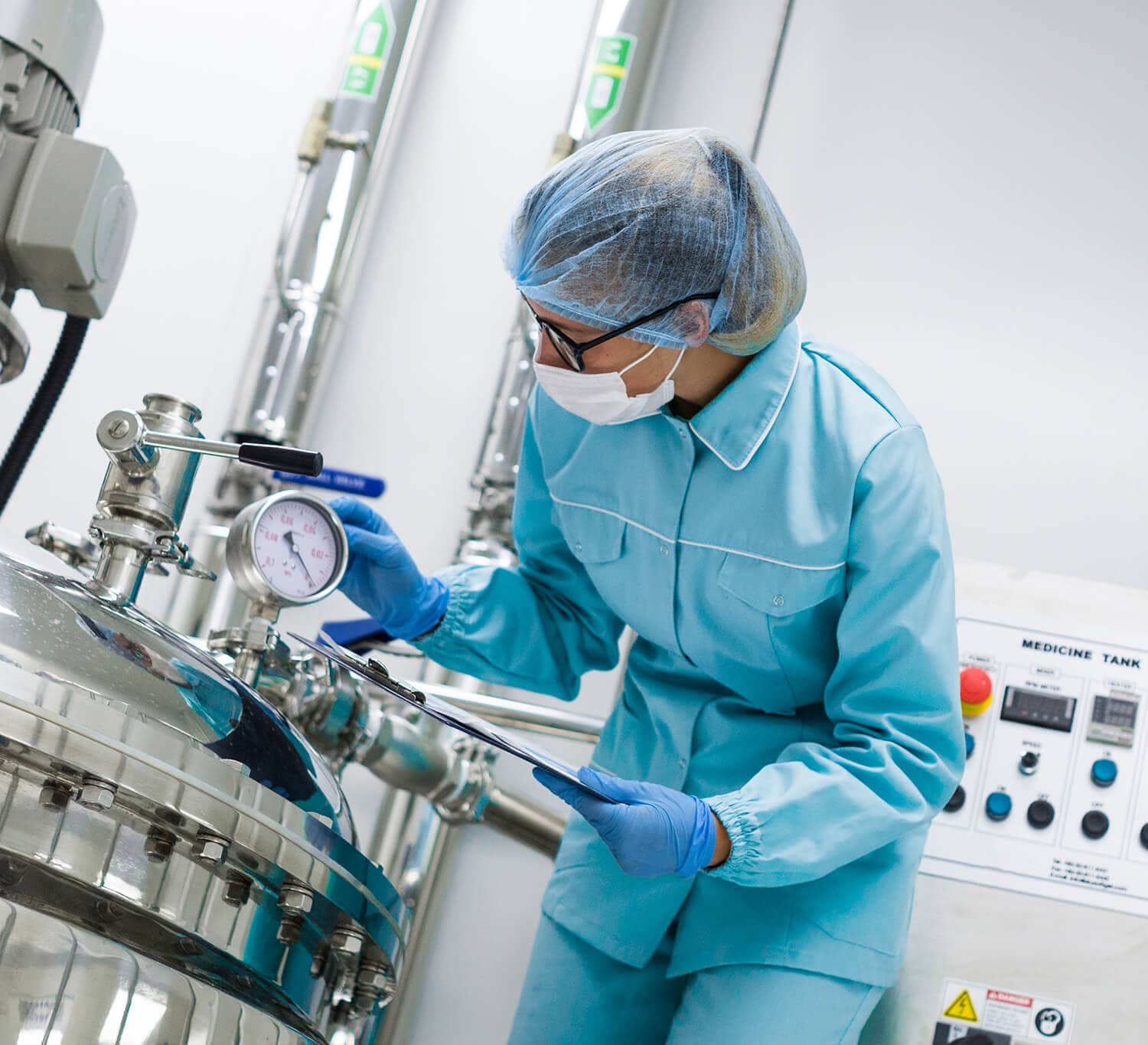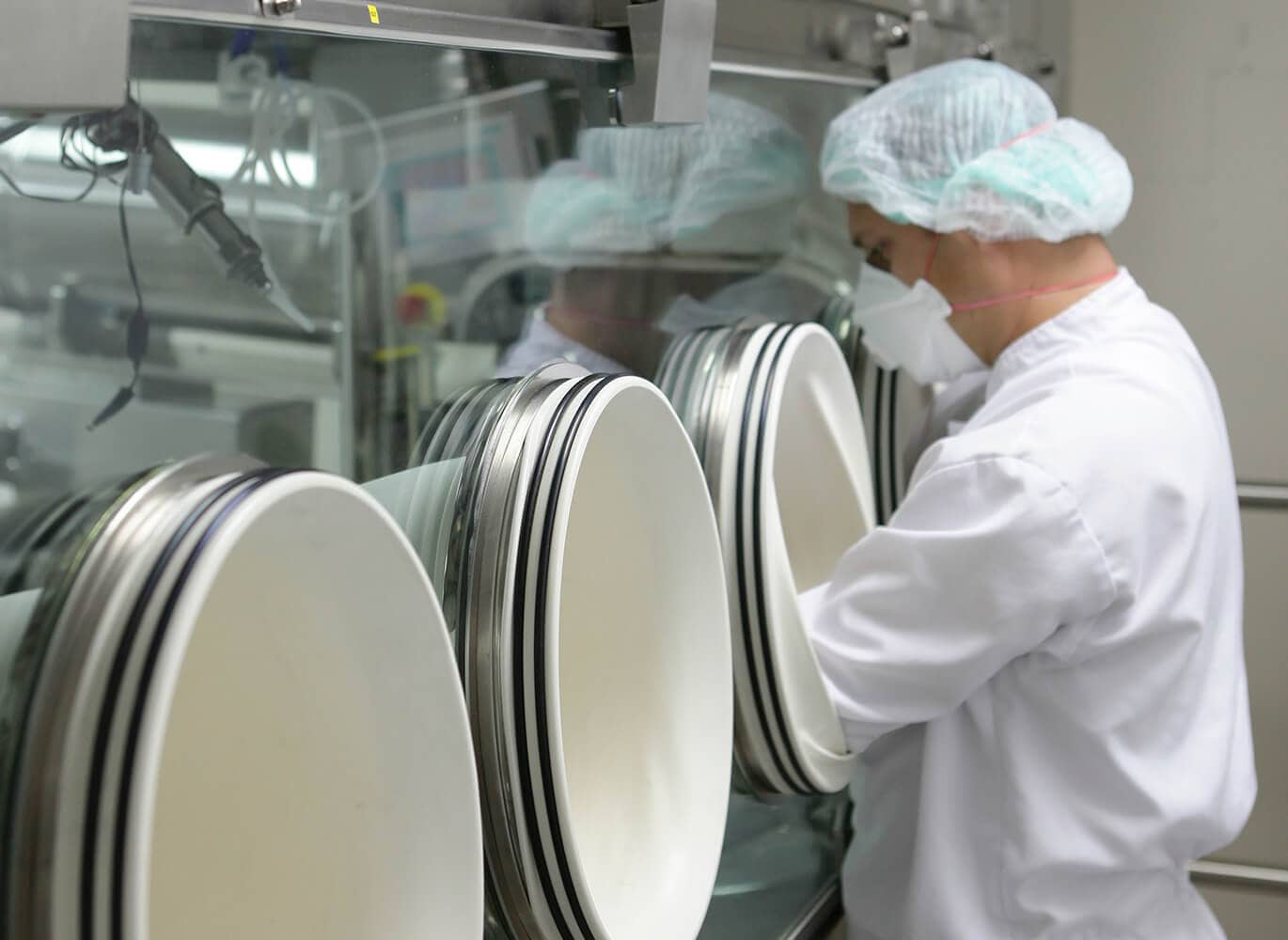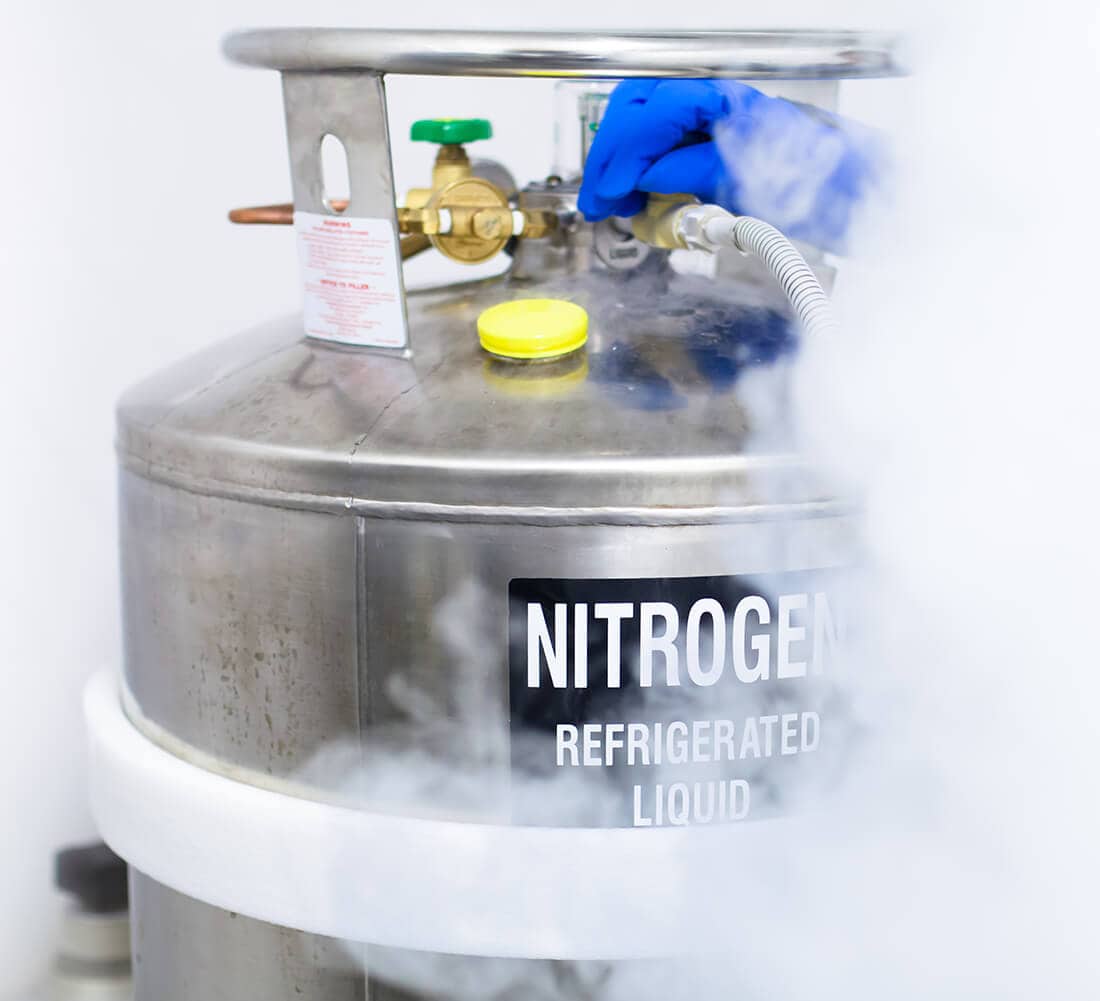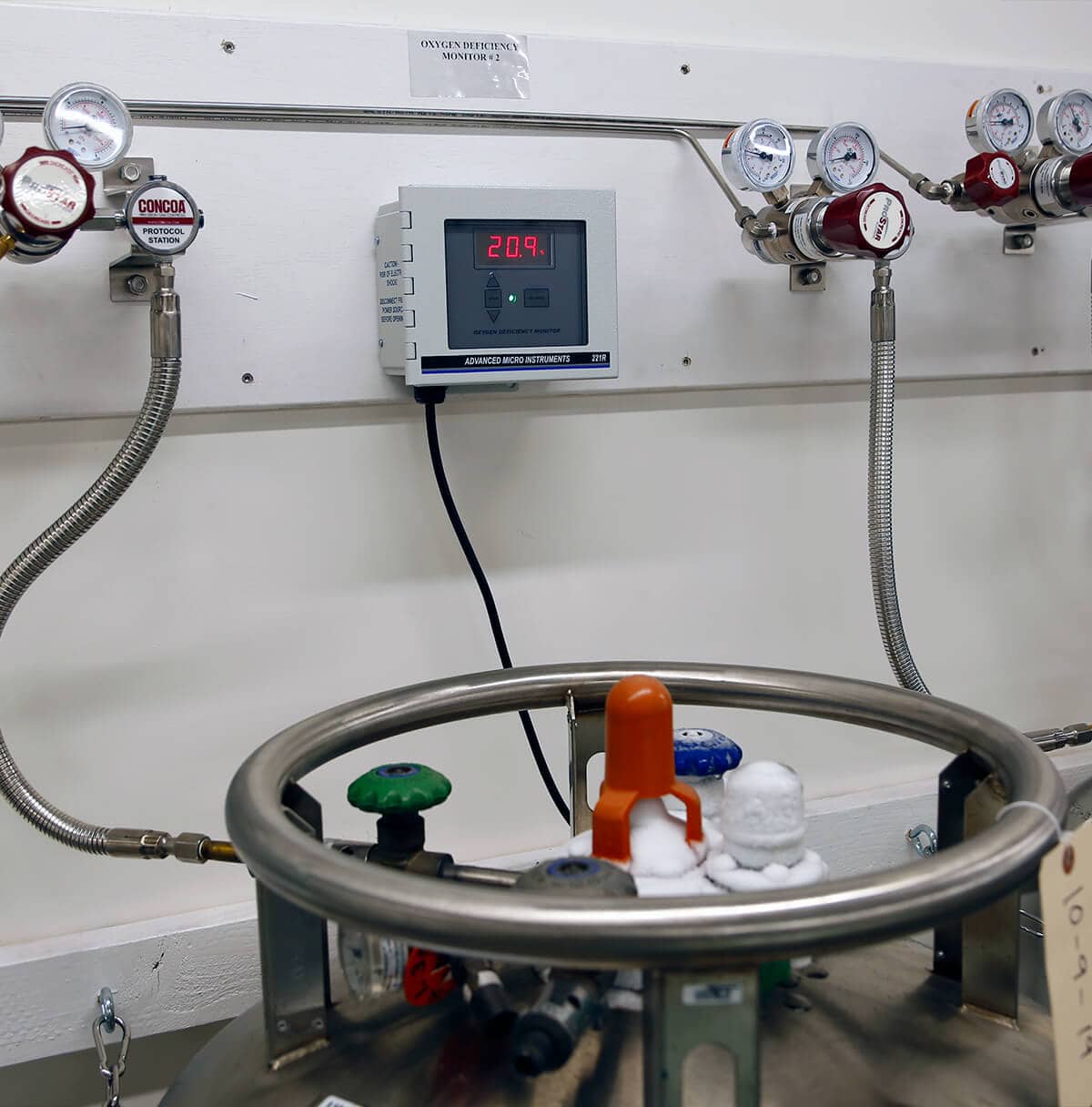
O2 Measurements in Laboratories
Oxygen is an abundant chemical element on earth and essential for many things, including human life. Within a laboratory setting, oxygen in a gaseous state can be critical and detrimental, depending on what is happening in the lab. This means that precisely knowing the concentration of oxygen in a defined atmosphere can make all the difference between success and failure of lab activities.
Some laboratory activities require work to be done in an inert or oxygen-free environment. This requires trace oxygen analyzers that allow scientists to verify that there is nearly zero oxygen in the controlled atmosphere. Other experiments may require an oxygen-enriched environment, where oxygen is used to raise the O2 levels above what is typically found in earth’s atmosphere. Oxygen analyzers that can measure accurately between 20-100% oxygen levels will be important to the success of the work. Finally, labs will use oxygen deficiency monitors to protect lab personnel from atmospheres when the oxygen level becomes too high or too low for humans. This can occur when there is a malfunction or leak in compressed gas equipment used in the lab.

What is a Laboratory Glove Box?
A glove box in a laboratory is a system that establishes a controlled environment, separate from the surrounding atmosphere in which materials can be manipulated. A glove box will typically have some type of gloves built into the side of the box that allows lab personnel to manipulate the items inside the glove box while maintaining the controlled environment. They will often have a clear window to allow the user to view the work being done, as well as an air lock or antechamber to transfer items between the controlled atmosphere and the outside environment.
A glove box establishes an inert environment using various purification techniques to remove oxygen, moisture or other undesirable contaminates. A glove box is typically kept at a positive pressure to prevent the ingress of oxygen or moisture into the inert environment due to potential microscopic leaks.

How is Oxygen in a Glove Box Monitored?
Maintaining an atmosphere that is almost completely void of oxygen is critical when manipulating and storing highly reactive substances within a glove box. To measure and verify that the environment is oxygen-free takes specialized oxygen analyzers. The glove box oxygen analyzer must be capable of detecting ppm or “trace” levels of oxygen within the enclosed atmosphere.
An oxygen analyzer will typically contain an electrochemical oxygen sensor or “fuel cell” to detect oxygen levels. The electrochemical sensor generates a current output that is proportional to the oxygen partial pressure of the atmosphere in the glove box. When no oxygen is present, an electrochemical sensor will read a ‘true zero’. This allows this type of sensor to easily and accurately detect trace levels of oxygen down to the parts per billion range.
The trace oxygen analyzer for a glove box will typically have a display for the technician to see the oxygen level within the glove box measured in ppm. They will also have alarm set points, relay contacts as well as an analog output to communicate the oxygen level to the control system of the glove box. Some typical AMI Oxygen Analyzers for glove box monitoring include the MODEL 2001RS Trace Oxygen Analyzer and the MODEL 2001LC Trace Oxygen Analyzer.

Does a Laboratory Require a Room Oxygen Monitor?
A typical laboratory can store and utilize significant amounts of compressed gases such as nitrogen, argon, helium and others to perform lab work. Nitrogen is commonly used for cryogenic purposes, such as preserving specimens. It is also used as an inert background gas that is combined with other gases to produce ‘spec gas’ mixture that is stored in compressed gas cylinders. Argon and nitrogen are frequently utilized to create an oxygen-free environment for conducting experiments or storing oxygen-sensitive samples. Liquid helium is often employed to cool superconducting magnets, similar to those used in MRI systems.
Regardless of the application of the compressed gas in the laboratory, if the gas is stored in any volume, then the lab should have an oxygen deficiency monitor like AMI’s 221R Oxygen Monitor. A leak in the storage or distribution systems or an unplanned release of the inert gas can quickly displace the normal atmospheric oxygen within the lab. Oxygen concentrations can rapidly drop to levels that will endanger lab personnel and even result in asphyxiation or death. The oxygen deficiency monitor will detect low oxygen levels in the atmosphere and sound an alarm to alert individuals in the area to the danger.

How Does an Oxygen Deficiency Monitor Work?
An oxygen deficiency monitor continuously analyzes the oxygen level in the lab atmosphere to make sure it is at a safe level. The oxygen monitor will contain an oxygen sensor that outputs a voltage proportional to the oxygen concentration in the air. That voltage is converted to an oxygen reading by the oxygen monitor’s control system.
The typical oxygen level in ambient air should be 20.9%. When the oxygen concentration in the air drops below that level, the oxygen deficiency monitor executes its programmed response. AMI’s 221R Oxygen Deficiency Monitor will trigger a “caution” alarm when the oxygen levels drop to 20.0% and a “danger” alarm when the oxygen levels reach 19.5%. Additionally, the oxygen monitor will detect and alarm in an oxygen-enriched environment if the oxygen levels exceed 23.5%. The alarms will include an audible alarm as well as electrical relays that can be used to turn on warning lights or initiate ventilation fans.
The oxygen monitor’s low oxygen and high oxygen alarm setpoints are based on OSHA-established safety standards for work environments. These should always be permanently set for any oxygen monitor and not be capable of being changed or bypassed.





